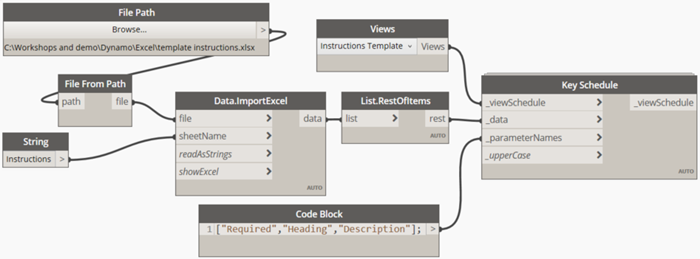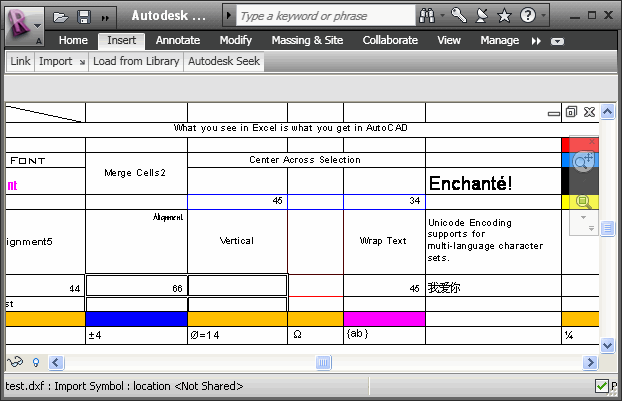Enhance Your Workflow with Powerful Revit Add Ins
Wiki Article
Excel-to-Revit: A Game-Changing Operations for Architectural Layout - Introducing the Secrets
Presenting excel-to-revit, the game-changing operations that will reinvent your layout procedure. With excel-to-revit assimilation, you can simplify your building style, unlock effectiveness, and make best use of collaboration within your team. Obtain all set to take your building style to the next degree with excel-to-revit!The Power of Excel-to-Revit Assimilation

Imagine the ease of being able to edit and update project data in Excel, and quickly see those changes shown in your Revit model. Say goodbye to manual data entry or tedious updates. With Excel-to-Revit combination, you can save time and lower errors by leveraging the power of Excel's features and formulas to instantly generate precise data in Revit.
Not only does this assimilation boost efficiency, however it additionally enhances partnership among staff member. You can quickly share Excel files with coworkers, who can then import the information into their Revit models. This advertises a smooth exchange of details and ensures that everybody is collaborating with the most up-to-date data.

Enhancing Architectural Layout With Excel-To-Revit
Streamlining architectural design is made less complicated with making use of Excel-to-Revit (revit tools). With this powerful assimilation, you can enhance your process and conserve beneficial time throughout the style procedure. By leveraging the abilities of Excel and Revit, you can flawlessly move information between the 2 platforms, getting rid of the need for manual information entry and lowering the risk of errorsExcel-to-Revit permits you to import and export data easily, allowing you to conveniently upgrade and change your architectural layouts. You can develop schedules, calculate amounts, and create records in Excel, and after that move that data straight right into your Revit version. This assimilation guarantees that your layout details is always up-to-date and synchronized, removing the need for hands-on updates and lowering the possibilities of variances.
By utilizing Excel-to-Revit, you can additionally take benefit of the effective computational abilities of Excel. You can execute intricate estimations, analyze data, and automate repeated jobs, all within Excel. After that, with just a few clicks, you can import the outcomes back into Revit, allowing you to make educated layout choices and maximize your building designs.
Opening Effectiveness: Discovering the Excel-to-Revit Operations
Maximize your performance by seamlessly integrating Excel and Revit for a more efficient workflow. With the Excel-to-Revit process, you can open a whole new degree of efficiency in your building style procedure. By making use of the power of Excel's data administration abilities and integrating it with the flexibility and precision of Revit, you can improve your layout process and save beneficial time.Among the crucial advantages of this assimilation is the ability to import and export information between Excel and Revit. This suggests that you can quickly transfer job information, such as room schedules or product quantities, from one software program to the various other, removing the need for hands-on information entrance and minimizing the chances of mistakes. You can also develop customized formulas and computations in Excel to automate recurring tasks and carry out complicated computations, which can then be flawlessly integrated right into your Revit versions.
Additionally, the Excel-to-Revit process permits far better coordination and cooperation in between employee. With Excel working as a central information center, several team members can function on different aspects of the project all at once, upgrading and sharing information in real-time. This not just improves communication however likewise makes sure that everybody is dealing with the most current information, getting rid of the danger of inconsistencies.
Taking Full Advantage Of Partnership: Excel-to-Revit for Architectural Teams
By seamlessly incorporating Excel and Revit, building groups can considerably improve cooperation and accomplish much more reliable style outcomes. When utilizing this effective workflow, you can conveniently move data in between Excel spread sheets and Revit versions, improving the layout process and boosting communication among group participants.Furthermore, by leveraging Excel's powerful calculation capabilities, you can carry out complex calculations and analysis on your design information, driving and offering important understandings informed decision-making. This combination additionally enables you to export information from Revit to Excel, enabling you to create thorough records, graphes, and graphs for presentations and analysis. This joint workflow promotes effective interaction and control amongst employee, as Excel works as a main hub for data monitoring and sharing.
General, by welcoming the Excel-to-Revit workflow, architectural groups can attain greater levels of partnership, efficiency, and accuracy in their design procedure. revit add ins. This assimilation encourages teams to interact flawlessly, making certain that every person is on the very same page and adding to the success of the project
Revealing the Tricks of Excel-to-Revit Assimilation

Among the tricks of Excel-to-Revit integration is the capacity to leverage the power of solutions and calculations in Excel to drive parameters and produce facility geometries in Revit. You can connect Excel spread sheets to Revit households, allowing you to input data directly discover this info here into the spreadsheet and have it immediately update in the Revit version. This streamlines the style procedure and makes sure precision and consistency throughout the task.
Another secret is the capacity to create customized schedules and records in Excel, utilizing information extracted from Revit. This allows you to evaluate and picture task details in a means that is not feasible within Revit alone. You can easily create quantity liftoffs, expense estimates, and task timelines, supplying valuable insights for decision-making and job administration.
In addition, Excel-to-Revit combination makes it possible for effective collaboration among staff member. Numerous individuals can work on the same Excel spread sheet concurrently, making it much easier to coordinate and track modifications. You can likewise use Excel's commenting function to provide responses or interact style alterations.
Final Thought
So there you have it, the keys of excel-to-revit combination have actually been introduced. This game-changing workflow has the power to improve architectural layout, unlock effectiveness, and maximize partnership for building teams. By combining the power of Excel and go to the website Revit, designers can now work much more successfully, save time, and create much better layouts. So why wait? Beginning integrating excel-to-revit integration right into your building style process today and reinvent the method you function.With just a couple of clicks, you can import the outcomes back right into Revit, allowing you to make informed design choices and enhance your building layouts.
By making use of the power of Excel's information monitoring abilities and combining it with the adaptability and precision of Revit, you can enhance your layout process and save beneficial time.
By effortlessly integrating Excel and Revit, architectural teams can greatly enhance collaboration and achieve much more efficient design outcomes. When utilizing this effective workflow, you can conveniently move data in between Excel spread sheets and Revit designs, streamlining the style procedure and boosting interaction among team members.Additionally, by leveraging Excel's powerful computation capabilities, you can carry out complicated calculations and evaluation on your design information, driving click now and providing important insights informed decision-making.
Report this wiki page